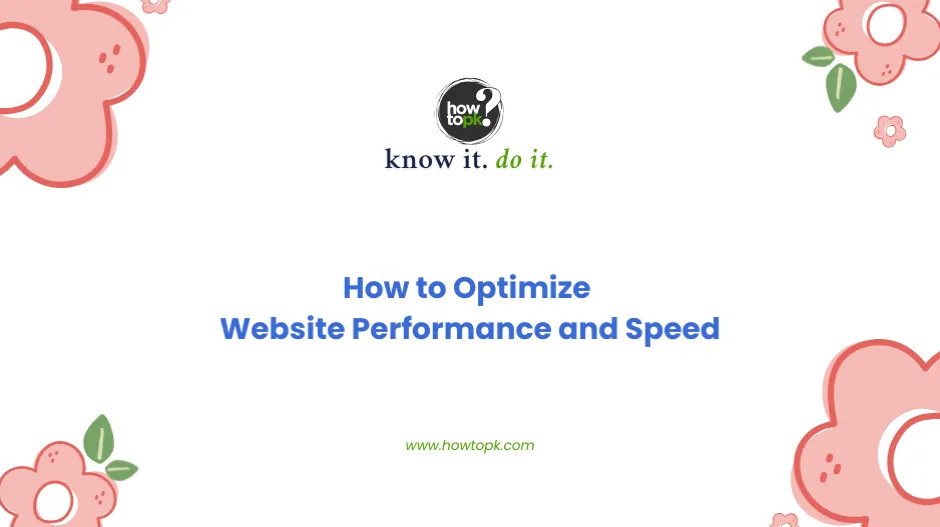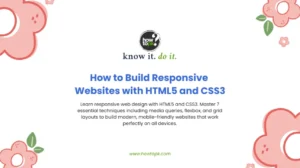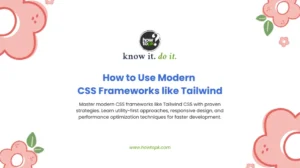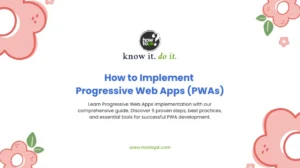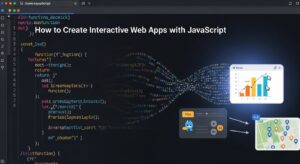Website performance optimization has become crucial for online success, directly impacting user experience, search engine rankings, and conversion rates. Studies show that even a one-second delay in page load time can reduce conversions by 7% and increase bounce rates significantly.
Understanding Website Performance Fundamentals
Website performance optimization encompasses various techniques designed to reduce loading times and improve user experience. Before diving into advanced strategies, it’s essential to understand what affects your site’s speed and how users interact with slow-loading pages.
Key Performance Metrics to Track
Metric | Description | Target Range |
First Contentful Paint (FCP) | Time until first content appears | Under 1.8 seconds |
Largest Contentful Paint (LCP) | Time for main content to load | Under 2.5 seconds |
Time to Interactive (TTI) | When page becomes fully interactive | Under 5 seconds |
Cumulative Layout Shift (CLS) | Visual stability measurement | Under 0.1 |
1. Optimize Images for Maximum Website Performance
Image optimization represents one of the most impactful website performance optimization strategies. Unoptimized images often account for 60-70% of total page weight.
Implementation Steps:
- Convert images to next-generation formats (WebP, AVIF)
- Implement responsive images with multiple sizes
- Use lazy loading for below-the-fold images
- Compress images without quality loss
Tools like TinyPNG and ImageOptim can reduce file sizes by 50-80% while maintaining visual quality.
2. Leverage Browser Caching Strategies
Browser caching allows repeat visitors to load your pages faster by storing static resources locally. This website performance optimization technique can reduce load times by up to 60% for returning users.
Cache Implementation Methods:
- Set appropriate cache headers for different file types
- Configure server-side caching (Redis, Memcached)
- Implement Content Delivery Network (CDN) caching
- Use browser storage for dynamic content
3. Minimize HTTP Requests Through Resource Optimization
Each element on your webpage requires a separate HTTP request. Reducing these requests is fundamental to website performance optimization.
Effective Strategies:
- Combine CSS and JavaScript files
- Use CSS sprites for small images
- Inline critical CSS and JavaScript
- Remove unnecessary plugins and widgets
4. Implement Content Delivery Networks (CDNs)
CDNs distribute your content across global servers, delivering resources from locations closest to your users. Popular CDN providers like Cloudflare and Amazon CloudFront can reduce load times by 30-50%.
CDN Benefits for Website Performance Optimization:
- Reduced server response times
- Improved global accessibility
- Enhanced security features
- Automatic optimization features
5. Optimize Database Performance
Database optimization directly impacts dynamic website performance. Slow database queries can increase page load times exponentially.
Database Optimization Techniques:
- Index frequently queried database fields
- Clean up unnecessary data regularly
- Optimize database queries
- Implement database caching
6. Minify and Compress Code
Code minification removes unnecessary characters from CSS, JavaScript, and HTML files without affecting functionality. This website performance optimization technique typically reduces file sizes by 20-30%.
Compression Methods:
- Enable Gzip compression on your server
- Use Brotli compression for modern browsers
- Minify CSS, JavaScript, and HTML
- Remove unused code and comments
7. Optimize Server Response Times
Server optimization forms the foundation of website performance optimization. Your server’s response time should ideally be under 200 milliseconds.
Server Optimization Strategies:
- Upgrade to faster hosting solutions (SSD storage, HTTP/2)
- Optimize server configurations
- Implement server-side caching
- Use performance monitoring tools
Popular hosting providers like SiteGround and WP Engine offer optimized environments specifically designed for performance.
8. Implement Critical CSS Loading
Critical CSS loading ensures above-the-fold content renders immediately while non-critical styles load asynchronously. This technique can improve perceived performance significantly.
Critical CSS Implementation:
- Identify above-the-fold content
- Extract critical CSS
- Inline critical styles in HTML head
- Load remaining CSS asynchronously
9. Optimize JavaScript Loading and Execution
JavaScript optimization prevents render-blocking and improves website performance optimization scores across all metrics.
JavaScript Optimization Methods:
- Use async and defer attributes appropriately
- Minimize DOM manipulations
- Implement code splitting
- Remove unused JavaScript libraries
10. Monitor and Test Website Performance Regularly
Continuous monitoring ensures your website performance optimization efforts remain effective over time.
Essential Testing Tools:
Advanced Website Performance Optimization Techniques
For technically advanced implementations, consider these sophisticated approaches:
- Service Workers: Implement offline functionality and advanced caching strategies
- HTTP/3 Protocol: Leverage the latest protocol improvements for faster connections
- Edge Computing: Process requests closer to users using edge servers
- Progressive Web Apps: Combine web and mobile app benefits
Common Performance Optimization Mistakes to Avoid
Mistake | Impact | Solution |
Over-optimizing | Diminishing returns | Focus on high-impact improvements |
Ignoring mobile performance | Lost mobile traffic | Prioritize mobile-first optimization |
Not testing regularly | Performance degradation | Implement automated monitoring |
Optimizing wrong metrics | Misdirected efforts | Focus on user-centric metrics |
Measuring ROI of Website Performance Optimization
Website performance optimization delivers measurable business benefits:
- Improved search engine rankings
- Higher conversion rates
- Reduced bounce rates
- Enhanced user experience
- Lower server costs
Studies indicate that businesses investing in comprehensive website performance optimization see average ROI improvements of 200-400%.
Conclusion
Website performance optimization requires systematic implementation of multiple techniques working together. Start with high-impact improvements like image optimization and caching, then progressively implement advanced strategies based on your specific needs.
Website performance optimization is an ongoing process, not a one-time task. Regular monitoring, testing, and refinement ensure your site maintains optimal speed and user experience as your content and traffic grow.
What specific aspect of website performance optimization would you like to explore further? Are there particular challenges you’re facing with your current site’s performance that we could address together?

